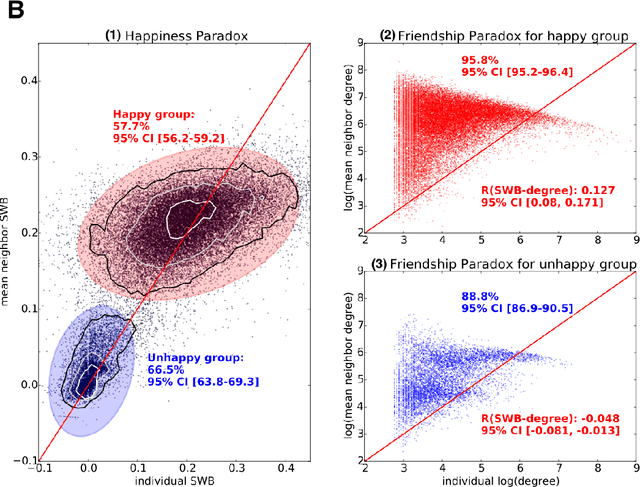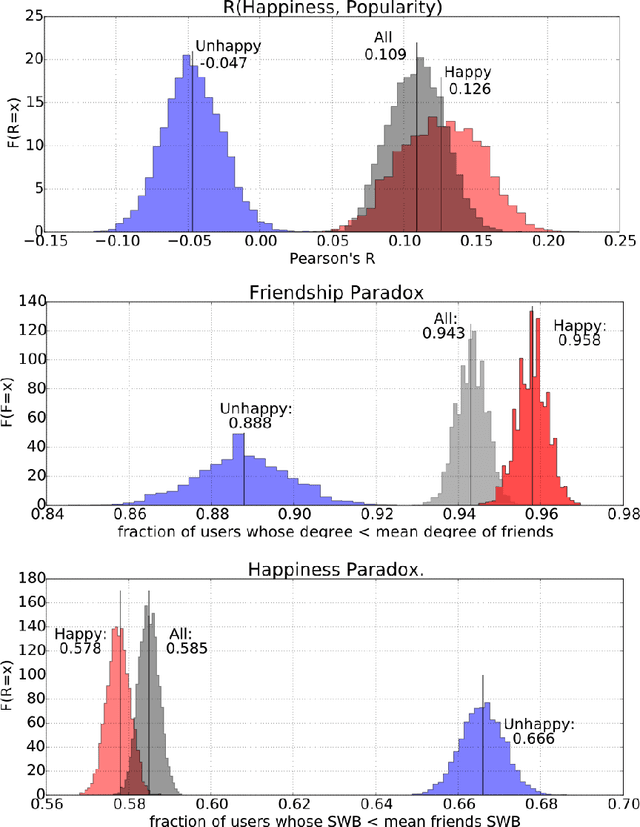Guangchen Ruan
The happiness paradox: your friends are happier than you
Feb 08, 2016



Abstract:Most individuals in social networks experience a so-called Friendship Paradox: they are less popular than their friends on average. This effect may explain recent findings that widespread social network media use leads to reduced happiness. However the relation between popularity and happiness is poorly understood. A Friendship paradox does not necessarily imply a Happiness paradox where most individuals are less happy than their friends. Here we report the first direct observation of a significant Happiness Paradox in a large-scale online social network of $39,110$ Twitter users. Our results reveal that popular individuals are indeed happier and that a majority of individuals experience a significant Happiness paradox. The magnitude of the latter effect is shaped by complex interactions between individual popularity, happiness, and the fact that users cluster assortatively by level of happiness. Our results indicate that the topology of online social networks and the distribution of happiness in some populations can cause widespread psycho-social effects that affect the well-being of billions of individuals.
Happiness is assortative in online social networks
Mar 03, 2011Abstract:Social networks tend to disproportionally favor connections between individuals with either similar or dissimilar characteristics. This propensity, referred to as assortative mixing or homophily, is expressed as the correlation between attribute values of nearest neighbour vertices in a graph. Recent results indicate that beyond demographic features such as age, sex and race, even psychological states such as "loneliness" can be assortative in a social network. In spite of the increasing societal importance of online social networks it is unknown whether assortative mixing of psychological states takes place in situations where social ties are mediated solely by online networking services in the absence of physical contact. Here, we show that general happiness or Subjective Well-Being (SWB) of Twitter users, as measured from a 6 month record of their individual tweets, is indeed assortative across the Twitter social network. To our knowledge this is the first result that shows assortative mixing in online networks at the level of SWB. Our results imply that online social networks may be equally subject to the social mechanisms that cause assortative mixing in real social networks and that such assortative mixing takes place at the level of SWB. Given the increasing prevalence of online social networks, their propensity to connect users with similar levels of SWB may be an important instrument in better understanding how both positive and negative sentiments spread through online social ties. Future research may focus on how event-specific mood states can propagate and influence user behavior in "real life".
* 17 pages, 9 figures
 Add to Chrome
Add to Chrome Add to Firefox
Add to Firefox Add to Edge
Add to Edge